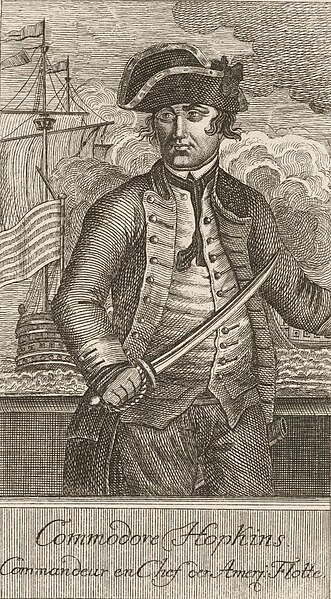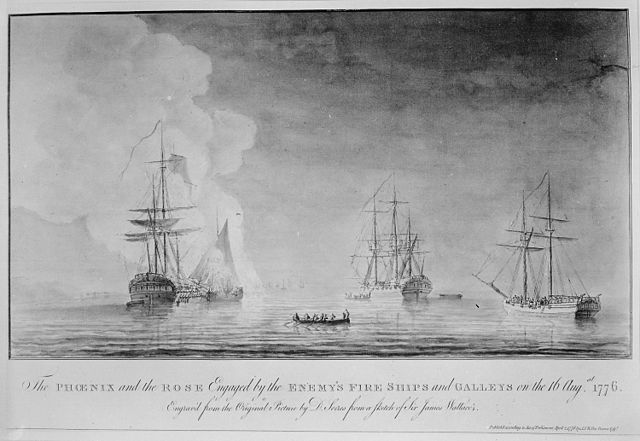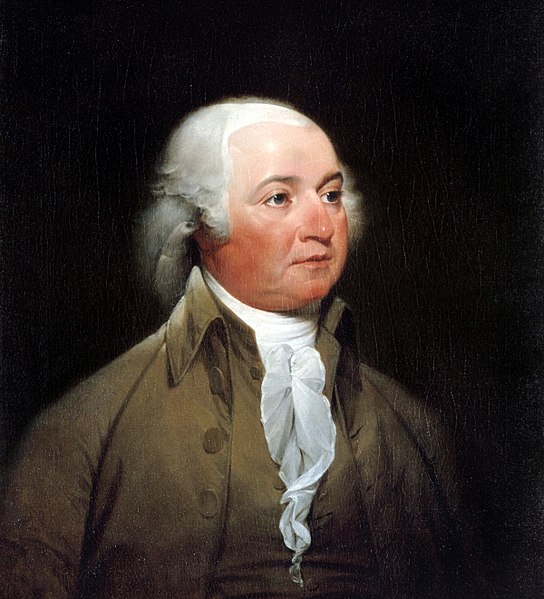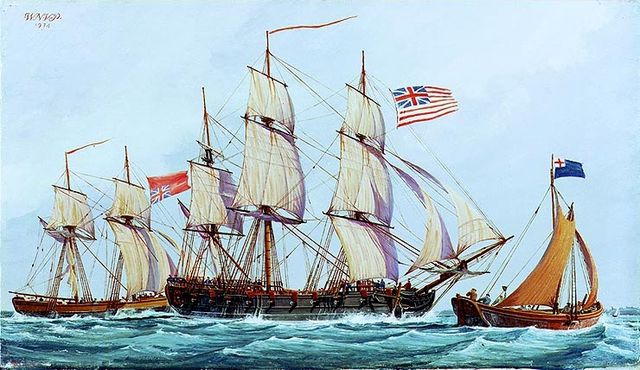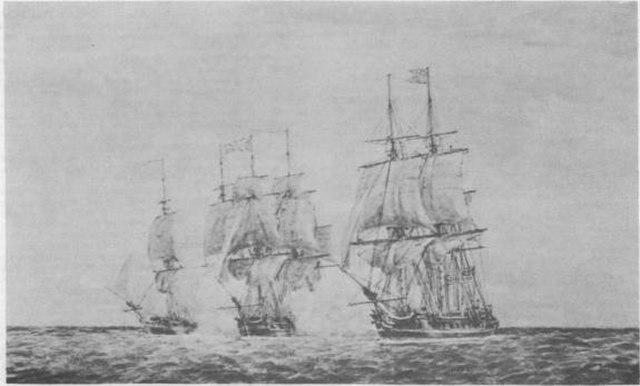Naval battles of the American Revolutionary War
The American Revolutionary War saw a series of battles involving naval forces of the British Royal Navy and the Continental Navy from 1775, and of the French Navy from 1778 onwards. Although the British enjoyed more numerical victories, these battles culminated in the surrender of the British Army force of Lieutenant-General Earl Charles Cornwallis, an event that led directly to the beginning of serious peace negotiations and the eventual end of the war. From the start of the hostilities, the British North American station under Vice-Admiral Samuel Graves blockaded the major colonial ports and carried raids against patriot communities. Colonial forces could do little to stop these developments due to British naval supremacy. In 1777, colonial privateers made raids into British waters capturing merchant ships, which they took into French and Spanish ports, although both were officially neutral. Seeking to challenge Britain, France signed two treaties with America in February 1778, but stopped short of declaring war on Britain. The risk of a French invasion forced the British to concentrate its forces in the English Channel, leaving its forces in North America vulnerable to attacks.

French and British ships battling on the Chesapeake, 3 September 1781
Commodore Esek Hopkins (French engraving)
British ships Phoenix and Rose engaged by colonial fire ships and galleys
Alfred, one of the first ships in the Continental Navy preparing for her maiden voyage
The Continental Navy was the navy of the Thirteen Colonies during the American Revolutionary War. Founded on October 13, 1775, the fleet developed into a relatively substantial force throughout the Revolutionary War, owing partially to the substantial efforts of the Continental Navy's patrons within the Continental Congress. These Congressional Patrons included the likes of John Adams, who served as the Chairman of the Naval Committee until 1776, when Commodore Esek Hopkins received instruction from the Continental Congress to assume command of the force.
John Adams took an active role in the formation of the navy and the drafting of suitable operational regulations. Painting by John Trumbull, c. 1792–93.
Continental ship Columbus with captured British brig Lord Lifford, 1776
Abraham Whipple painting by Edward Savage
Continental frigates Hancock and Boston capturing British frigate Fox, June 7, 1777


